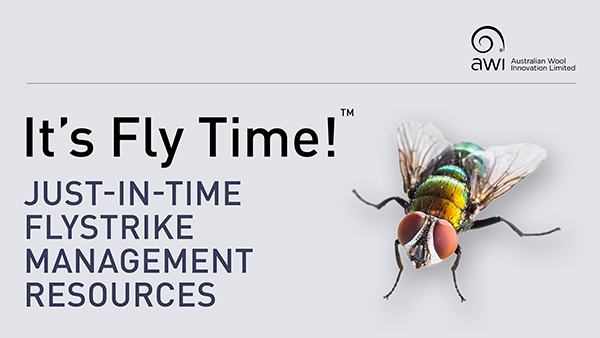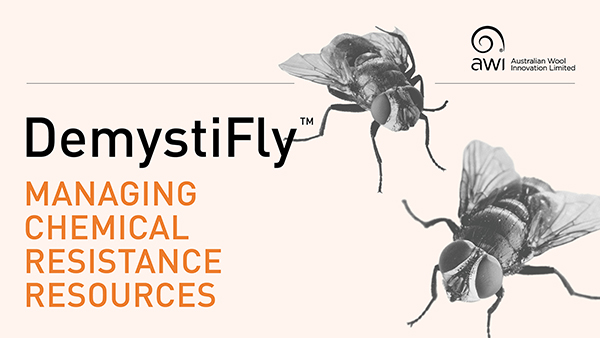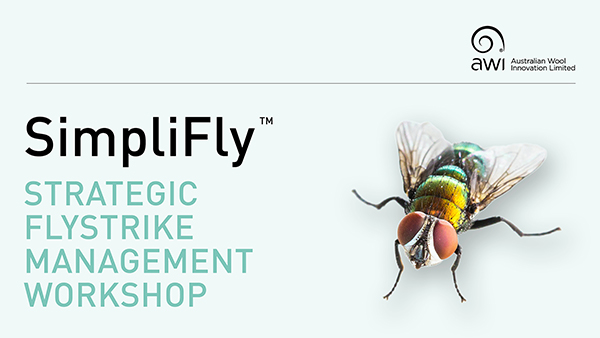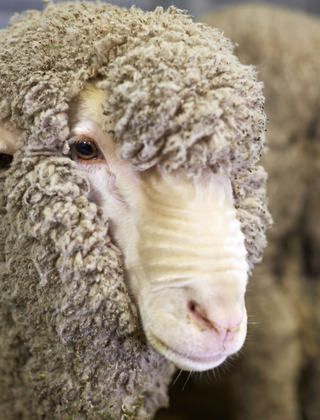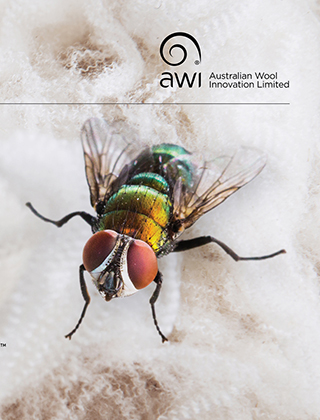Be prepared for Flystrike season
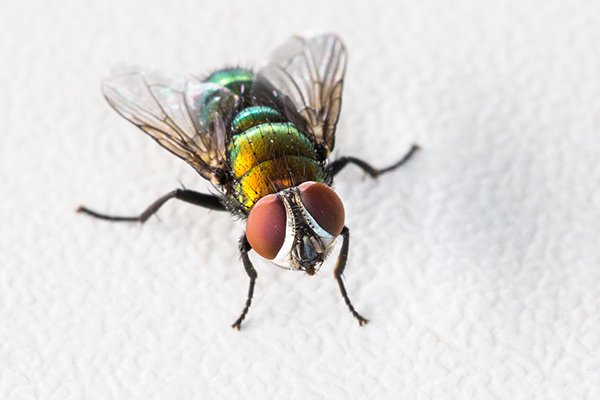
Heavier than normal winter rains across many of Australia’s sheep regions herald a potentially bad flystrike season. Early prevention of flystrike is key to minimising animal welfare and economic threats, so now is the time to implement your annual flystrike management plan. The resources from AWI’s Flystrike Extension Program can help you.
Heavier than normal winter rains across many of Australia’s sheep regions herald a potentially bad flystrike season. Early prevention of flystrike is key to minimising animal welfare and economic threats, so now is the time to implement your annual flystrike management plan. The resources from AWI’s Flystrike Extension Program can help you.
There are currently three components under AWI’s Flystrike Extension Program available to woolgrowers to support their flystrike management: (1) It’s Fly Time!™ resources, (2) DemystiFly™ resources and (3) SimpliFly™ workshops, while others are in development.
Woolgrowers across the country can pick and choose how to get involved with the different components of the program that best suits their requirements, sheep type, climate, operating environment and husbandry practices.
The popular It’s Fly Time™ resources provide practical and tactical information for woolgrowers on integrated flystrike management in the lead up to, and during, high-risk flystrike periods. They include tips for preventing flystrike, information on prioritising sheep for monitoring and treatment, and options for treating sheep when flystrike does occur. The resources include:
- It’s Fly Time! webinar (1 hour) recorded in August 2022.
- Factsheets on ‘Recognising and monitoring flystrike’ (4-pages) and ‘Preventing and treating flystrike’ (4-pages).
More information: Access the resources at www.wool.com/itsflytime
There are only a small number of chemical groups registered for flystrike control, so it is important to prolong the usefulness of these chemicals for as long as possible. By implementing resistance management strategies, woolgrowers can slow the development of resistance, which will help maintain the effectiveness of the currently registered chemical products. AWI has made available a range of practical information resources about blowfly chemical resistance to ‘demystifly’ this complex, yet important, issue:
- Factsheets on ‘Managing chemical resistance’ (6-pages) and ‘Frequently asked questions (4-pages)
- Producer case studies for both non-mulesed and mulesed sheep (4-pages each)
- Guides on ‘Understanding chemical resistance’, ‘Flystrike prevention and treatment chemicals’ and ‘Flystrike chemical rotation’ (1-page each).
More information: Access the resources at www.wool.com/demystifly
SimpliFly™ is a one-day workshop, delivered by AWI-accredited advisors in partnership with AWI’s state grower extension networks, to help woolgrowers reduce the incidence and impact of flystrike on their flocks and profits. During the workshop woolgrowers will learn about the range of tools available in their flystrike management toolbox and how to use them in combination.
Throughout the day, attendees work through developing a strategic flystrike management plan and annual calendar that incorporates both short- and long-term tools specific to their property.
More information: Access information about the workshop at www.wool.com/simplifly. To find out when there is going to be a SimpliFly™ workshop available near you, contact the AWI-supported grower extension network in your state and sign up to their free newsletters. You can find your network at www.wool.com/networks or call the AWI Helpline on 1800 070 099.
More AWI resources under development
Three more sets of resources are currently under development as part of AWI’s Flystrike Extension Program:
ClassiFlyTM
A one-day workshop to increase understanding and skills in breeding for flystrike resistance. To be launched later in 2022.
StrateFlyTM
A one-day workshop to develop a property-specific, whole-of-farm strategy for moving to a non-mulesed enterprise. To be launched in 2023.
AmpliFlyTM
One-on-one coaching and support from a trained and accredited advisor to assist you over time to implement your whole-of-farm strategy for moving to a non-mulesed enterprise. To be launched in 2023.
More information:
- For further information on AWI’s Flystrike Extension Program, head to wool.com/flystrikeresources
- For more detailed information on flystrike management, including information on chemical resistance management strategies and access to interactive decision support tools, visit FlyBoss at flyboss.com.au
- For information on AWI’s flystrike research, development and extension program, visit wool.com/flystrike
Key flystrike management messages
It’s important to have a broad flystrike management plan which incorporates the following three aspects, but preventing flystrike is key.
1. Prevention of flystrike
An integrated preventative flystrike program includes breeding for flystrike resistance, the use of crutching or shearing, dag control, appropriate tail length, selection of less flystrike-prone paddocks, applying appropriate chemical treatments and killing maggots and removing sources of protein.
2. Monitoring to detect flystrike
Monitor all mobs of sheep for signs of flystrike during high-risk periods, but especially weaners. Monitoring involves a combination of checks including looking for flystrike in sheep, checking populations of flies and checking weather conditions.
3. Treatment options when flystrike occurs
Make sure you use a combination of treatment activities and that you don’t rely on one single activity alone. It’s important to make sure all flystruck sheep are effectively treated, all maggots are killed and sources of protein are removed to aid the sheep’s recovery and to prevent additional strikes.
This article appeared in the September 2022 edition of AWI’s Beyond the Bale magazine. Reproduction of the article is encouraged.






